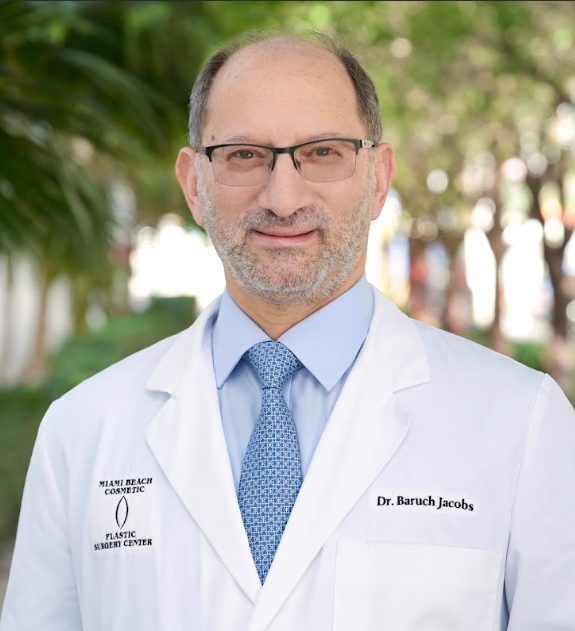While you may want the results of cosmetic procedures to be obvious yet natural-looking, you probably don't want your scars in any way obvious. Most surgeries come with the risk of scarring, but if you take the right steps before and after your procedure, you can prevent scars from appearing too noticeable. Renowned Boston plastic surgeon Dr. Samuel Lin with Dr. Ahmed Ibrahim, MD sat down with Haute Beauty to discuss how to best treat surgical scars to ensure they fade as much as possible.
 Photo Credit: Shutterstock
Photo Credit: Shutterstock
Haute Beauty: What is a scar?
Dr. Samuel Lin: A scar is a visible mark that persists following wound healing either from surgery, trauma, or other causes. They may be visible as a result of their shape, location, color, texture, or size.
HB: What are the types of abnormal scars?
SL: Hypertrophic scars – These are thick, raised scars that may be darker or lighter in color than the surrounding skin, and may enlarge with time.
Keloids – These are bigger than hypertrophic scars that spread outside the margins of the original incision.
Contractures – These are scars that limit movement as a result of pulling together of the skin and underlying tissue during the wound healing process. These are typically seen following burns.
HB: How are scars treated?
SL: Depending on the severity and type of scar, treatments range from simple topical treatments to surgical revision.
HB: How can I improve the appearance of my scar after surgery?
SL: Scar massage: Gently massaging your scar not only improves how it looks but has also shown to reduce pain and itching that can be experienced after surgery. The exact mechanism is unknown. In addition, it may help to prevent hypertrophic scars.
Topical Products and Dressings: There are numerous over-the-counter products that have been marketed as scar reducing. The three most commonly used ingredients in these products are Vitamin E (e.g. Intensive Overnight Scar Cream by Mederma), onion extract (Advanced Scar Gel by Mederma), and silicone (e.g. Scar FX or BIOCORNEUM).
Vitamin E: The current evidence suggests that vitamin E is may not be entirely effective in the prevention of scars.
Onion Extract: The clinical worth of onion extract is mostly unverified although it may have advantageous effects on scars at the molecular level.
Silicone: Silicone is available in the form of an occlusive dressing or cream/ointment. It functions by reducing the activity of scar-forming cells via occlusion and hydration and activates an enzyme that breaks down the scar. It has shown to be effective in the treatment of scars.
Pressure Garments: Application of pressure decreases swelling and helps to improve blood follow to tissue. Studies have suggested that it may be effective at lessening the incidence of hypertrophic scars.
HB: What are ways to reduce scar formation?
SL: Injections: Injecting steroid medicine, 5-Fluorouracil (5-FU), and bleomycin into the scar have been shown to be effective in scar treatment; improving pliability and thickness. Steroids work by activating an enzyme that breaks down excessive scar tissue. They may cause lightening of the skin and so dark-skinned individuals should be counseled on this risk. 5-FU prevents the overgrowth of cells that contribute to excessive scar formation. Bleomycin breaks DNA leading to cell death and therefore prevents decreasing the activity of cells that cause scar formation.
Lasers: The two most effective lasers for scar treatment are the CO2 (carbon dioxide) and PDL (pulsed dye laser) lasers. They function by impacting scar formation at the cellular level. The CO2 laser is better suited for the treatment of abnormal scar contour while the PDL laser is suggested for the management of established scars.
Fillers: Fillers are used to elevate depressed scars to the level of surrounding skin. Their effect is only temporary and treatments need to be regularly repeated.
Micro-needling: This involves creating multiple small holes in the skin to promote the release of cells that improve the appearance of scars.
Dermabrasion and Microdermabrasion: This entails removing the surface of the skin i.e. the scar. It can be used for both raised or depressed scars. Microdermabrasion is used for more superficial scars.
Fat Grafting: Fat grafting as shown to positively impact wound healing and is considered an effective scar treatment.
Molecular Therapies: Recent evidence has suggested that targeting proteins that affect the survival of cells has not proven efficacious.
Radiotherapy: This is generally employed in extreme cases of scarring given its side effects. It can be used as an addition to surgery in the treatment of severed hypertrophic scars and keloids.
HB: When is surgery used for scar treatment?
SL: Surgery is generally reserved for scars not responding to non-surgical modalities of treatment as wells as hypertrophic scars and keloids.
References:
American Society of Plastic Surgeons. Scar Revision – Minimize a Scar. Available at https://www.plasticsurgery.org/reconstructive-procedures/scar-revision. Accessed June 13, 2019.
Khansa I1, Harrison B, Janis JE. Evidence-Based Scar Management: How to Improve Results with Technique and Technology. Plast Reconstr Surg. 2016 Sep;138(3 Suppl):165S-78S.
WebMD. Scars and Your Skin. Available at https://www.webmd.com/skin-problems-and-treatments/scars. Accessed June 13, 2019.
For more information, visit Dr. Samuel Lin's social media:






![shutterstock_1291403395[1]](https://hauteliving.com/hautebeauty/wp-content/uploads/2019/09/shutterstock_12914033951-357x238.jpg)














